In my DFG-financed project “Earth surface response to Quaternary faulting and shallow crustal structure in the eastern Adria-Alpine collision zone and the Friulian plain” I investigate the active faults of NE Italy and western Slovenia. This project is part of the Priority Programme SPP2017 “Mountain Building Processes in 4D“. We’ve now published a paper on the activity of the Udine-Buttrio thrust fault. The paper is open access and available here.
Why is the fault interesting?
The Udine-Buttrio Thrust is an almost blind structure, about 30 km long, and roots in a shallow detachment. It is situated in the Friulian Plain of NE Italy and strikes NW-SE. The fault has very little relief apart from the Buttrio and Rosazzo Hills. To the north there is the E-W Alpine Thrust Front and to the east lies the Slovenian right-lateral strike-slip system with NW-SE trending faults. So the Udine-Buttrio Thrust has the orientation of the strike-slips, but the mechanism of the Alpine ones. None of the numerous historical earthquakes of M>5.5 could be tied to this fault, although it offsets Late Quaternary sediments…
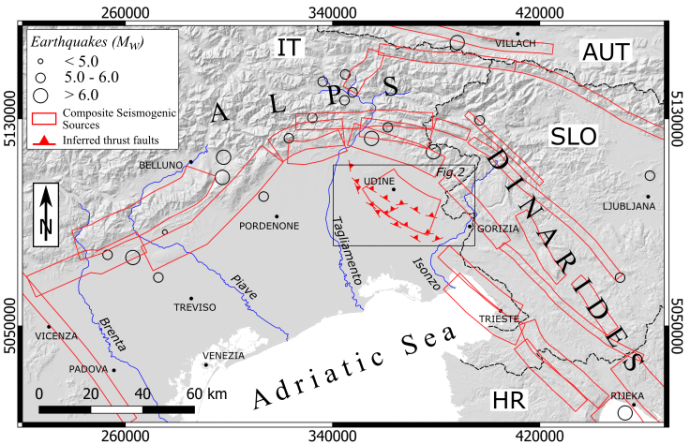
We wanted to quantify the Late Quaternary activity of the fault (spoiler: this worked) and to find out when it had its last big quake (spolier: nope, we didn’t even try to trench it).
What did we do?
Geomorphology
We used the freely-available 1 m LiDAR data and the 10 m TIN-DEM of NE Italy to measure the vertical offsets along the fault. We also calculated ksn-maps of the main rivers to check if the drainage system recorded tectonic activity. Around the Natisone River, we analyzed a set of young and deformed river terraces in detail. These terraces are offset by a nice little fault scarp…
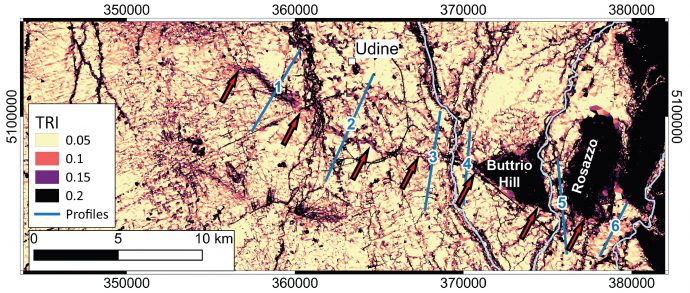
Geophysics
We used georadar (GPR) and electrical resistivity tomography (ERT) to image the subsurface geometry of the deformed river terraces in the Natisone Valley. Unfortunately, we could access all the properties we wanted, so that we weren’t able to cross the fault scarp properly.

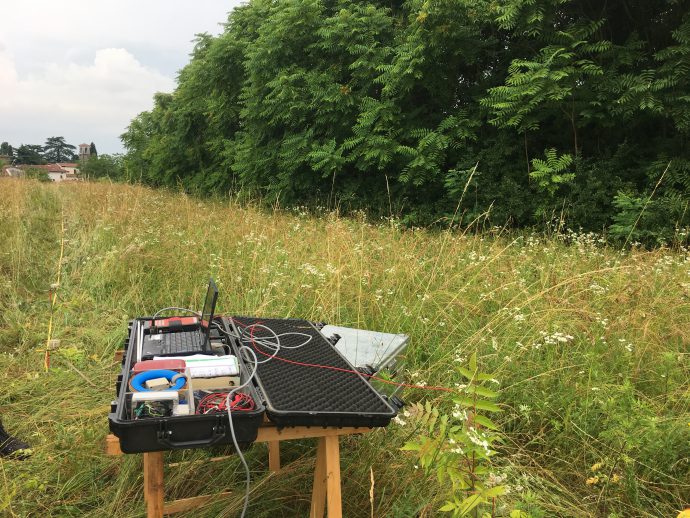
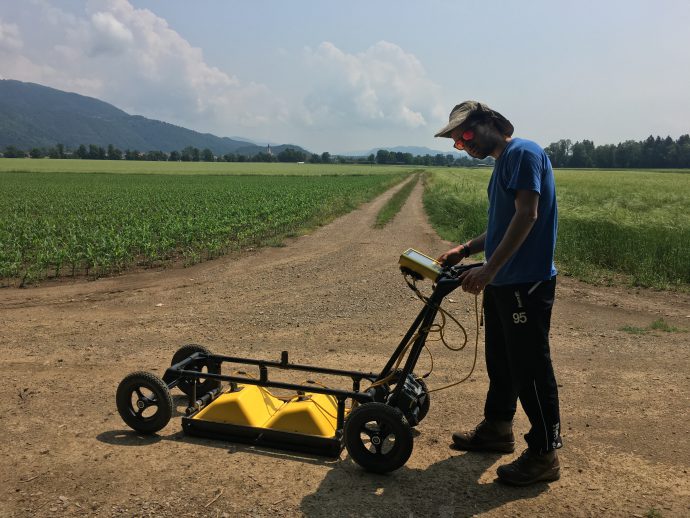
What did we find?
The vertical offsets along the fault vary significantly. Around 20 ka old surfaces show displacements between zero and up to 10 m; at some places we found folding in the hanging wall.

The ksn analysis didn’t reveal significant signals. We attribute this to the high stream power of the rivers in the Friuli Plain. These rivers have a high sediment load and are quite powerful during snow melt–any tectonic perturbation gets probably quickly erased.
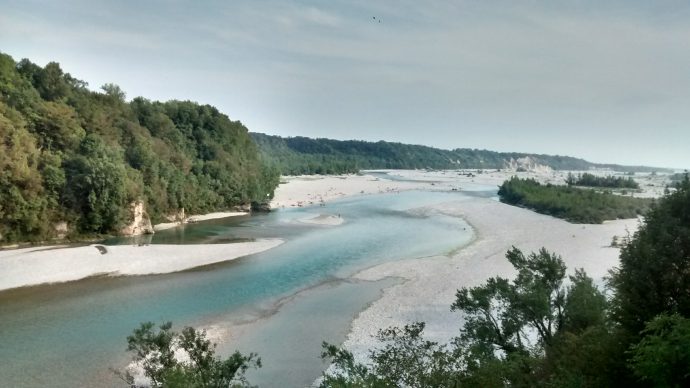
At the Natisone valley near Manzano, a splay fault offsets both old (20 ka) and young (8 ka) terraces by up to 3.4 m. Here, geophysics revealed N-dipping units, that is, against the slope of the S-flowing river.

Unfortunately, a test pit that we dug showed that dating the terraces is hard. Well-sorted fluvial gravels made of limestone had no material suitable for radiocarbon or luminescence dating (too coarse, no quartz or feldspar). Perhaps a 36Cl depth profile for cosmogenic nuclide dating could work. That’s one reason why we didn’t try to trench the fault. The other reason was that elsewhere along the fault the scarps are very degraded.
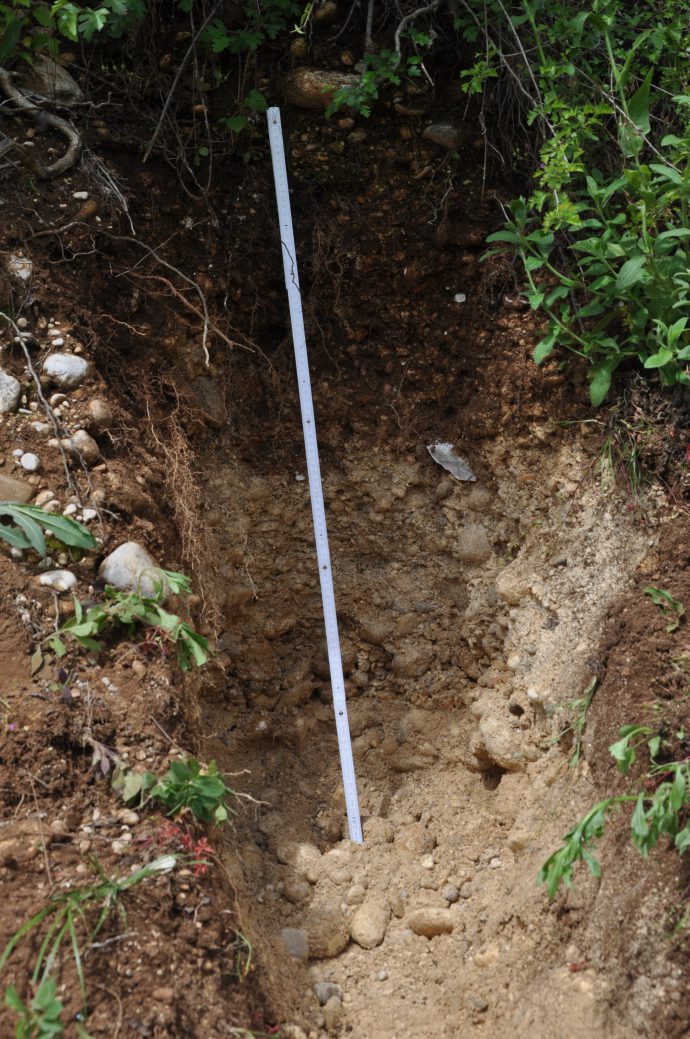
Using available data from the literature, we estimate vertical offset rates along the fault between 0.03 – 0.5 mm/yr. The splay fault that we found in the Natisone valley near Manzano has a lower rate of probably no more than 0.17 mm/yr.
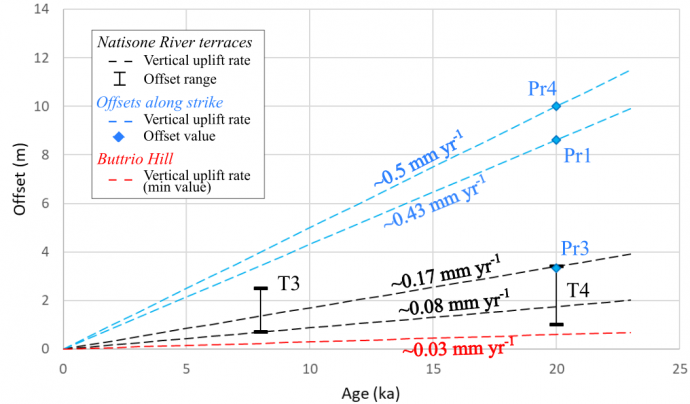
All in all, we have collected a lot of data that show that the fault has been quite active in the Late Quaternary, and that it is a source of seismic hazard that needs to be considered. This may be especially interesting for Udine, that sits right on the hanging wall of the thrust.
This paper is based on the MSc.-thesis of Andrea Viscolani.
Citation
Viscolani, A., Grützner, C., Diercks, M., Reicherter, K., & Ustaszewski, K. (2020). Late Quaternary Tectonic Activity of the Udine-Buttrio Thrust, Friulian Plain, NE Italy. Geosciences 10(2), 84, doi:10.3390/geosciences10020084. OPEN ACCESS!



No Comments
No comments yet.